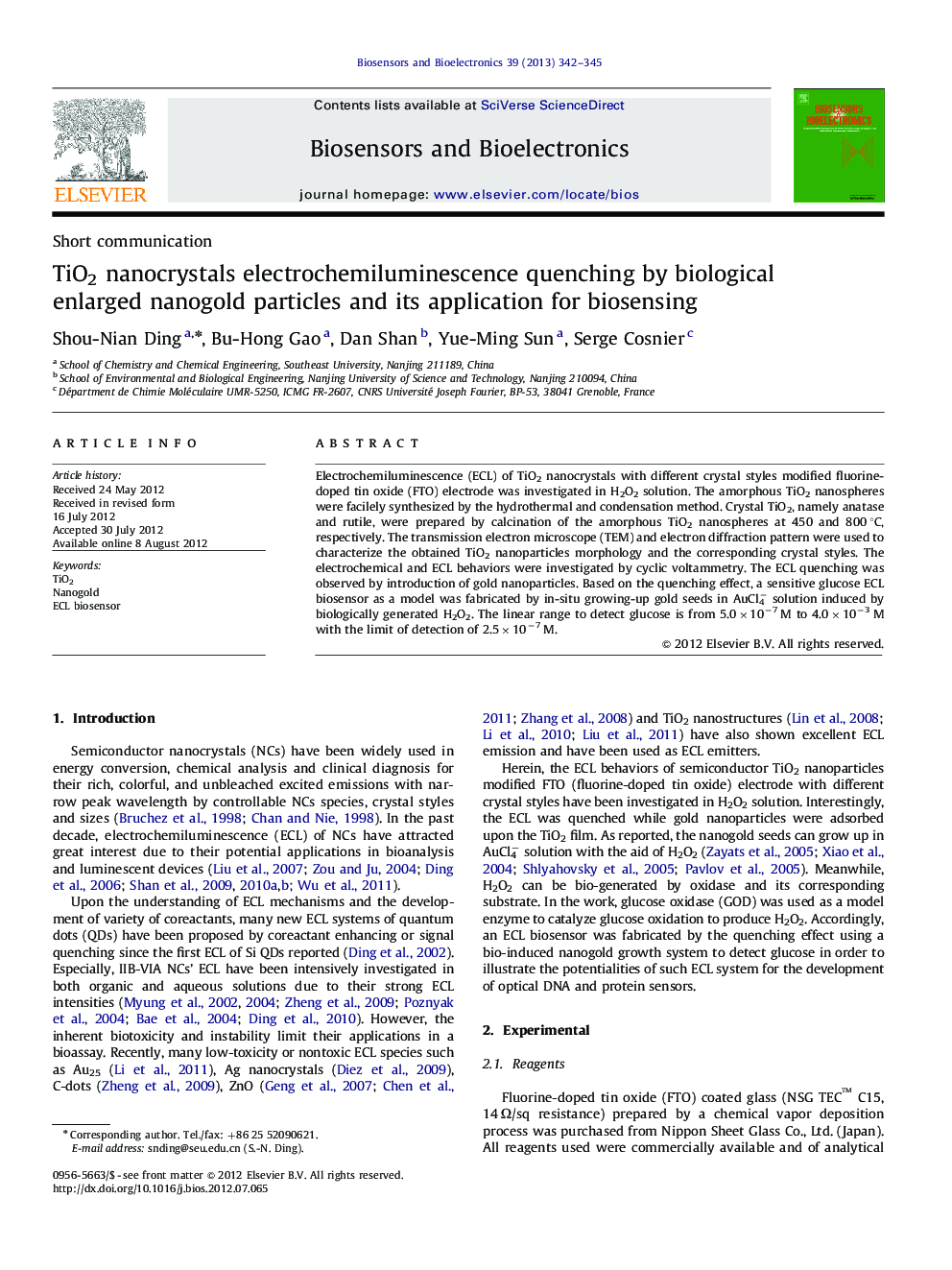| کد مقاله | کد نشریه | سال انتشار | مقاله انگلیسی | نسخه تمام متن |
|---|---|---|---|---|
| 867255 | 909779 | 2013 | 4 صفحه PDF | دانلود رایگان |

Electrochemiluminescence (ECL) of TiO2 nanocrystals with different crystal styles modified fluorine-doped tin oxide (FTO) electrode was investigated in H2O2 solution. The amorphous TiO2 nanospheres were facilely synthesized by the hydrothermal and condensation method. Crystal TiO2, namely anatase and rutile, were prepared by calcination of the amorphous TiO2 nanospheres at 450 and 800 °C, respectively. The transmission electron microscope (TEM) and electron diffraction pattern were used to characterize the obtained TiO2 nanoparticles morphology and the corresponding crystal styles. The electrochemical and ECL behaviors were investigated by cyclic voltammetry. The ECL quenching was observed by introduction of gold nanoparticles. Based on the quenching effect, a sensitive glucose ECL biosensor as a model was fabricated by in-situ growing-up gold seeds in AuCl4− solution induced by biologically generated H2O2. The linear range to detect glucose is from 5.0×10−7 M to 4.0×10−3 M with the limit of detection of 2.5×10−7 M.
► Rutile TiO2 presented the best electrochemiluminescence (ECL) performance among amphorous, antanase and rutile crystal styles.
► Gold nanoparticles quenched the ECL.
► A signal-off glucose ECL biosensor as a model was fabricated by in-situ biologically enlarged nanogold.
Journal: Biosensors and Bioelectronics - Volume 39, Issue 1, 15 January 2013, Pages 342–345